Children's Heroes
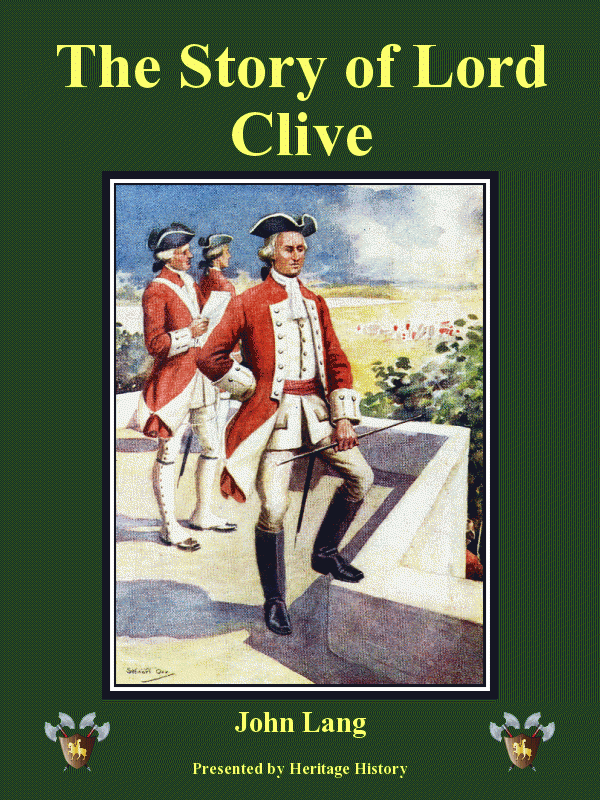
The Children's Heroes series was published in the early 1900ís by T. C. and E. C. Jack, and has many of the same
positive attributes as their well-known Told to the Children Series. Instead of focusing on literature however,
it is a series of biographies, primarily about historical English men-of-action. Several of the "heroes" dealt
with in this series were not unambiguously good men, but all lived important and action filled lives which
are of great interest to young people.
Children's Heroes by Various Authors
| Title | sheets | eBooks |
|---|
| Story of Robert Bruce by Lang | British Middle Ages, Young Readers | 44 |
| Story of Joan of Arc by Lang | Christian Europe, Young Readers | 35 |
| Story of Columbus by Imlach | Spanish Empire, Young Readers | 34 |
| Story of Francis Drake by Elton | British Middle Ages, Young Readers | 37 |
| Story of Raleigh by Duncan | British Middle Ages, Young Readers | 36 |
| Story of Lord Clive by Lang | British Empire, Young Readers | 32 |
| Story of Captain Cook by Lang | British Empire, Young Readers | 34 |
| Story of Napoleon by Marshall | Modern Europe, Young Readers | 34 |
| Story of Nelson by Sellar | British Empire, Young Readers | 40 |
| Story of Abraham Lincoln by Hamilton | Early America, Young Readers | 37 |
| Story of Livingstone by Golding | British Empire | 32 |
| Story of H. M. Stanley by Golding | British Empire | 32 |
| Story of Lord Roberts by Sellar | British Empire | 39 |
| Story of General Gordon by Lang | British Empire | 38 |
| Chalmers of New Guinea by Kelman | Unavailable | |
| Story of Cromwell by Marshall | Unavailable | |
| Story of Bishop Patterson by Paget | Unavailable | |
Told to the Children
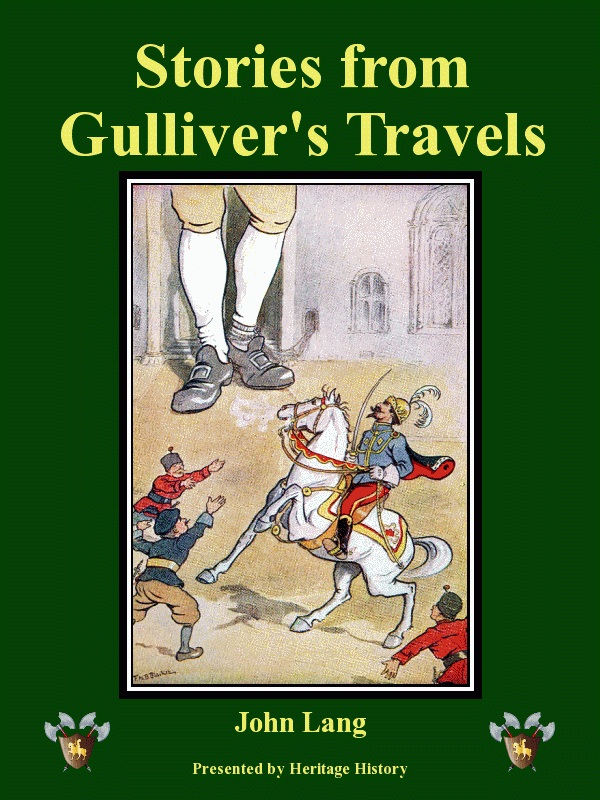
The object of this series, published by E. C. and T. C. Jack in Great Britain in the early 1900ís, was
to take well known classics from both the western canon and 19th century English literature, and
retell the stories in a simple manner for children age 9-12.
The books themselves are short, well written, and beautifully illustrated. An upper elementary
age child might be able to read an entire book in less than two hours, and even younger children
can sometimes read them independently.
A great deal of the complexity of the original is left out, but in most cases the author focuses
on telling a few stories well rather than trying to cover every aspect of the original at a
superficial level.
The complete series involves over 30 books, but we have listed here only those that pertain
directly to British history, and have already been published by Heritage History. The complete
series can be found in our Young Readers collection.
Told to the Children by various authors
| Title | Compact Library | size |
|---|
| Stories from Gulliver's Travels by Lang | British Empire, Young Readers | 33 |
| Celtic Tales by Chisholm | British Empire | 42 |
| King Arthur's Knights by Macgregor | British Middle Ages, Young Readers | 36 |
| Stories from Ballads by Macgregor | British Middle Ages | 36 |
| Stories from Dante by Macgregor | Christian Europe | 41 |
| Stories of Siegfried by Macgregor | Christian Europe, Young Readers | 37 |
| Stories from Pilgrim's Progress by Macgregor | British Middle Ages, Young Readers | 37 |
| Uncle Tom's Cabin by Marshall | Early America, Young Readers | 48 |
| Stories of Beowulf by Marshall | British Middle Ages, Young Readers | 29 |
| Stories of Robin Hood by Marshall | British Middle Ages, Young Readers | 38 |
| Stories of Roland by Marshall | Christian Europe, Young Readers | 33 |
| Stories of William Tell by Marshall | Christian Europe, Young Readers | 31 |
| Stories of Guy of Warwick by Marshall | Christian Europe, Young Readers | 31 |
| Stories of Wagner by Smith | Modern Europe | 35 |
| Stories from the Old Testament by Chisholm | Young Readers | 36 |
| Stories from the Life of Christ by Kelman | Young Readers | 44 |
| Stories from the Iliad by Lang | Ancient Greece, Young Readers | 36 |
| Stories from the Odyssey by Lang | Ancient Greece, Young Readers | 37 |
| Stories from the Arabian Nights by Steedman | Young Readers | 42 |
Story of the World
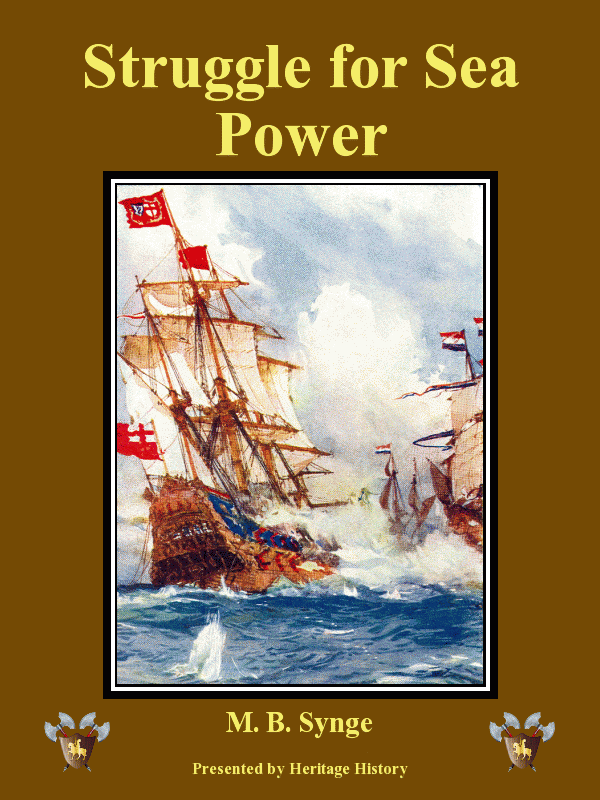
The Story of the World series comprises a set of five volumes, written at an introductory reading
level, that cover all major events in the history of Western Civilization, from stories of Biblical
and Babylonian History to the close of the nineteenth century. Each of the fifty or so chapters
in each volume, tells the story of some individual or event that is key to understanding the major
developments of the era. While statesmen and military commanders figure heavily in the narrative,
stories of explorers, scientists, artists, authors, and religious figures are also presented.
The last two volumes of the series are included in the British readers collection because they
focus mainly on 18th and 19th centuries, when Britain played a dominant role in much of world
history. These were the
centuries that saw the rise of colonialism, capitalism, democracy and modernism, and in all
events, and in all major conflicts, Britain played a pivotal role.
Story of the World by M. B. Synge
| Title | Compact Library | size |
|---|
| On the Shores of the Great Sea | Ancient Greece, Ancient Rome | 78 |
| Discovery of New Worlds | Christian Europe, British Middle Ages | 85 |
| Awakening of Europe | Christian Europe, British Middle Ages | 90 |
| The Struggle for Sea Power | Modern Europe, British Empire | 87 |
| Growth of the British Empire | Modern Europe, British Empire | 89 |
Cousins of Long Ago
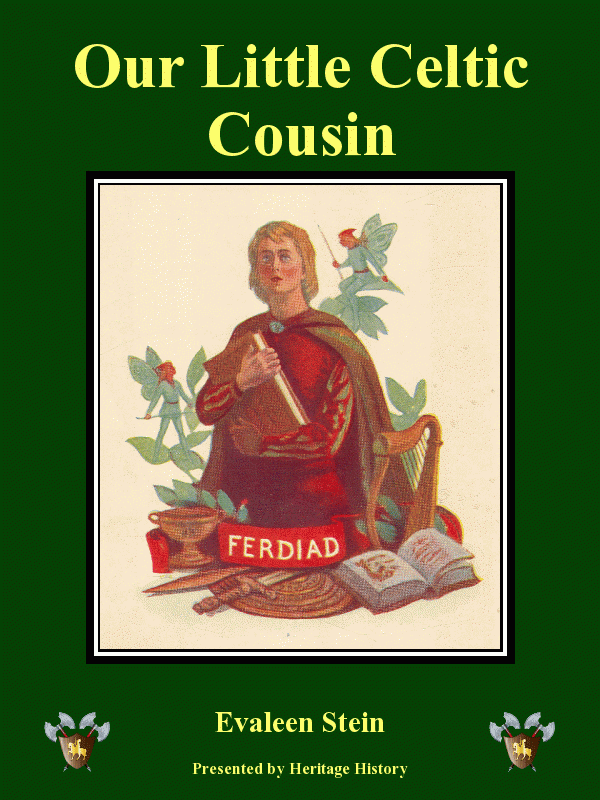
The Our Little Cousin series was introduced by the Page Company in the early 1900's.
It was based on the idea of introducing world geography through the stories of children who
live in various countries. After its initial success, a new series was initiated, entitled
Our Little Cousin of Long Ago. These books differed from the original in that they
were centered on ancient civilizations instead of modern ones. Most were set in the midst
of important historical events, but the central drama is always fictional, and the historical
events and characters play out in the background, rather than the foreground of the story.
Like the original series, the books are intended to focus on the every-day life, beliefs,
customs, and livelihoods, of the characters rather than to tell a particular historical tale.
In many cases however, the character is present at an important battle, or during the
sacking of monastery, or during some other key historical event. But the main plot typically
involves the curious adventures of a ten-year-old boy rather than a particular historical
incident.
Little Cousins of Long Ago by various authors
| Title | Compact Library | size |
|---|
| Our Little Spartan Cousin of Long Ago by Cowles | Ancient Greece, Young Readers | 43 |
| Our Little Athenian Cousin of Long Ago by Cowles | Ancient Greece, Young Readers | 36 |
| Our Little Roman Cousin of Long Ago by Cowles | Ancient Rome, Young Readers | 37 |
| Our Little Carthaginian Cousin of Long Ago by Winlow | Ancient Rome, Young Readers | 36 |
| Our Little Saxon Cousin of Long Ago by Cowles | British Middle Ages, Young Readers | 34 |
| Our Little Norman Cousin of Long Ago by Stein | British Middle Ages, Young Readers | 41 |
| Our Little Crusader Cousin of Long Ago by Stein | Christian Europe, Young Readers | 48 |
| Our Little Celtic Cousin of Long Ago by Stein | British Empire, Young Readers | 37 |
| Our Little Viking Cousin of Long Ago by Johnston | Christian Europe, Young Readers | 49 |
H. E. Marshall's British Histories
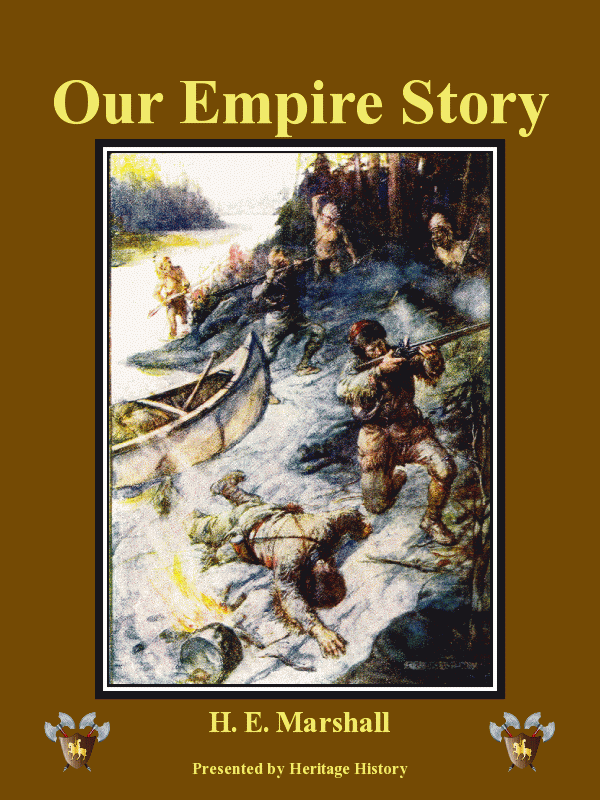
One of the most famous storybooks of English History is Our Island Story, by H. E.
(Henrietta Elizabeth) Marshall. Published in 1905, it was widely read throughout the
British Empire for the first half of the twentieth century, and did not go out of print
until the mid-fifties. Marshall followed this success with a series of other
juvenile history books, written over the following decades, but she is best known for her three part series on the
British Isles, beginning with Our Island Story and following with Scotland's Story and
Our Empire Story.
Her special talent for writing episodes from history as if they were fairy tales, made her
extremely popular with children who were happy to read her books purely for their
entertainment value, rather than for serious studies. As she says in her introduction:
I must tell you, though, that this is not a history lesson, but a story-book. There are
many facts in school histories, that seem to children to belong to lessons only. Some of
these you will not find here. But you will find some stories that are not to be found in
your school books,óstories which wise people say are only fairy tales and not history. But
it seems to me that they are part of Our Island Story, and ought not to be forgotten, any
more than those stories about which there is no doubt.
These three books, together with This Country of Ours, a history of the United States
which focuses heavily on the colonial period, provide an excellent introduction to the
history of the English speaking people throughout the world, and give a romantic, rather
than an analytical overview of the growth and dominance of Great Britain
during the nineteenth century. Probably no nation is more responsible for the world-wide
spread of modern ideas, including parliamentary democracy and free trade, than Great
Britain, and much of modern life is impossible to understand without a grasp of British
history. The Marshall books do not attempt to explain these difficult concepts, but rather
lay the foundation for understanding the soil from which modernism has sprung.
We have grouped a fifth books with this series, although it is written in a somewhat different
vein than the other four. English Literature for Boys and Girls is a superlative
introduction to the great works of English Literature, although we suspect its real audience
is college-prep oriented high-schoolers, rather than middle-school. Marshall combines fascinating
stories about the authors with narrative excerpts from their most famous works.
This book should be read by everyone who aspires to learn the great works of the
English masters of literature.
British Histories by H. E. Marshall
Stories from English History
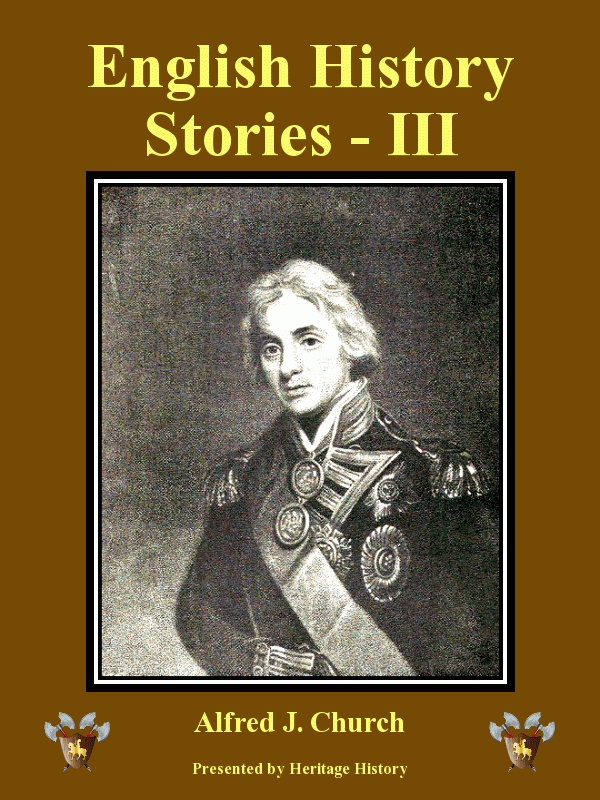
This three volume collection of famous stories from English History
is intended to provide the intermediate student with a moderately
detailed version of some of the more famous episodes in English
history. It is not a comprehensive history, in that much is left
out, and the stories are not necessarily related in a continuous
narrative, but each, taken on its own, is entertaining and informative.
The History of England is broken into three periods as follows: Vol I:
From Julius Caesar to the Black Prince (54 B.C. to 1360 A.D.);
Vol II: From Richard II to Charles I (1360 to 1649); Vol III:
From the Lord Protector to Queen Victoria (1649 to 1900).
The author of this series is the prolific Alfred J. Church,
a prominent author of both Classical and English history for
juveniles. He is best known for his collection of Greek and Roman
histories and fiction, but he also produced numerous
works on English History.
Stories from English History by Alfred J. Church.
| Title | Compact Library | size |
|---|
| Stories from English History: I | British Middle Ages | 77 |
| Stories from English History: II | British Middle Ages | 67 |
| Stories from English History: III | British Empire | 67 |
Makers of England
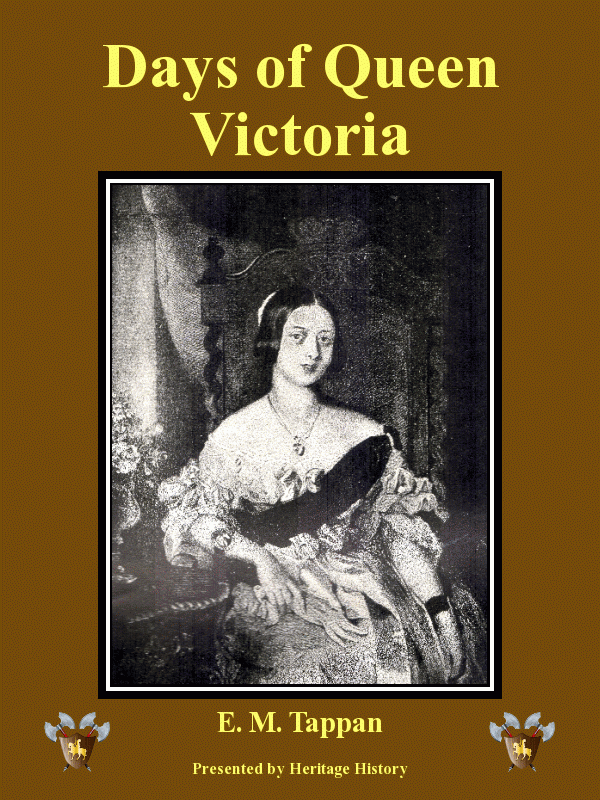
This series provides biographies of four of the most important monarchs of England. The
life and times of each of the subjects is masterfully told, in a manner accessible to
middle school students, or even older grammar school students. The stories of the two
early kings of England, Alfred of the Saxons, and William of Normandy, are filled with
danger, adventure, battles, and intrigue, which illustrate the rough and difficult
times in which they lived, and would likely be especially appealing to boys.
The stories of the two queens, Elizabeth and Victoria, also reflect the eras in which they
lived. The Tudor period was transitional, as England began its rise as a sea power, and
grappled with the difficulties of the Reformation. The Victorian era was prosperous,
modern, and relatively frivolous compared to the earlier, more rugged ages.
Each of these biographies is written to appeal to young students and focuses on the life
and character of the subject rather than dwelling on ongoing political events. The
childhood of each of the heroes and heroines is given in great detail, and only the most
significant political events of their reigns are touched upon.
Makers of History by Eva March Tappan
| Title | Compact Library | size |
|---|
| In the Days of Alfred the Great | British Middle Ages | 91 |
| In the Days of William the Conqueror | British Middle Ages | 94 |
| In the Days of Queen Elizabeth | British Middle Ages | 88 |
| In the Days of Queen Victoria | British Empire | 101 |
Peeps at History
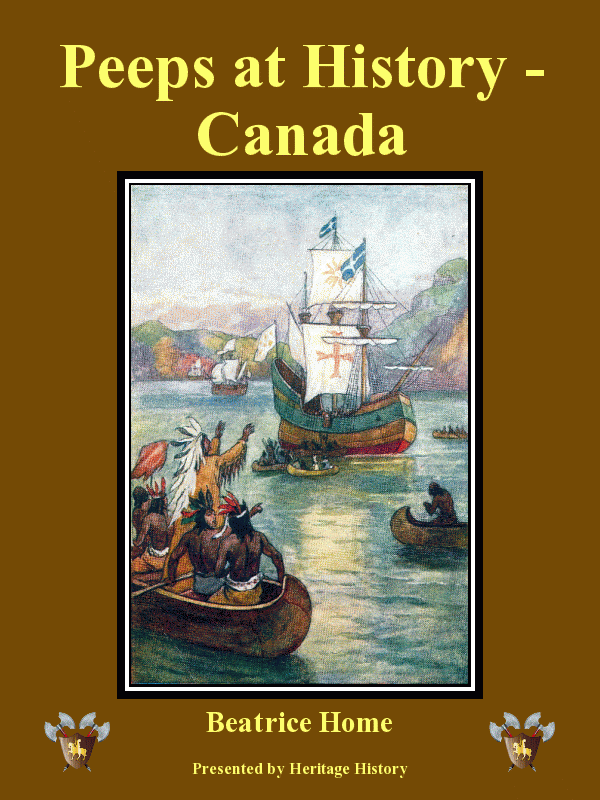
The Peeps at History series, in spite of its somewhat silly name, is a well done,
wonderfully illustrated, set of clear and succinct histories. Each book is less than 100
pages, including illustrations, and each is organized in a clear and helpful fashion.
Obviously, there is little room in such a short book to develop many of the stories of
history, but as a quick and painless overview, the Peeps series is quite useful.
Only the volumes that relate to British History are included in the British Collection.
The complete Peeps at History series can be found in Heritage History's Intermediate Readers Collection.
Peeps at History by various authors
Synge Great Englishmen
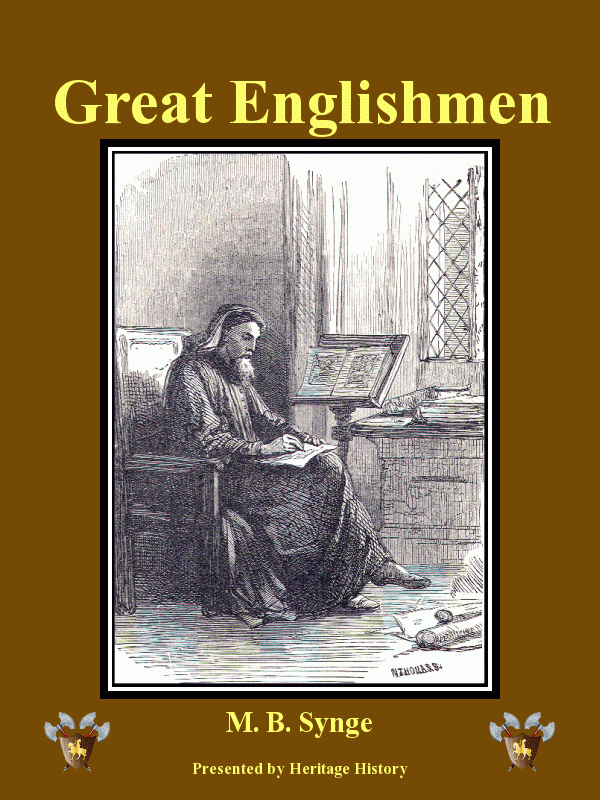
These two books are a collection of short biographies of prominent English men and women primarily between
the tenth and 18th centuries. Each book includes about twenty short biographies of many of the best known
Englishmen during England's rise from the Plantagenet era, to the early years of Empire. The life stories
of Venerable Bede, Chaucer, John Milton, Sir Isaac Newton, Wellington, as well as many
others are briefly told.
Great Englishmen by M. B. Synge
Hillegas Boer Histories
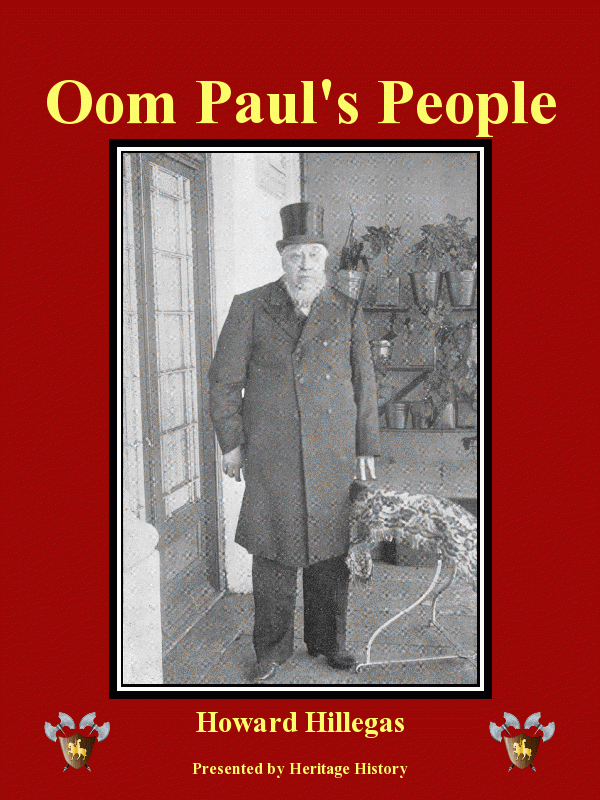
Howard Hillegas was an American who lived in South Africa during the period of the
Second Boer War, and actually traveled with the Boer army as it fought for its
independence against the expansionist designs of the British Empire. He was
generally a sympathetic observer, but his books provide a fair portrayal
of Boer life and values, which were in many ways similar to those of the
"frontiersmen" of the U.S. West.
The imperial, racial and tribal politics of South Africa were very complex
during this period. Although the territories of South Africa had been
won by the British from the Dutch during the Napoleonic Wars, the British
did not take much interest in the territory until both diamonds and gold
were found in the area. At that point they made aggressive territorial
movement against the Boer farmers (descendants of the Dutch settlers),
who had lived independently for hundreds of years without the
aid of a modern government, and desired to preserve their independence.
The inevitable conflict was the most deadly
and hard-fought war the British government had encountered for generations.
Boer Histories by Howard Hillegas
Stories of the Gorilla Country
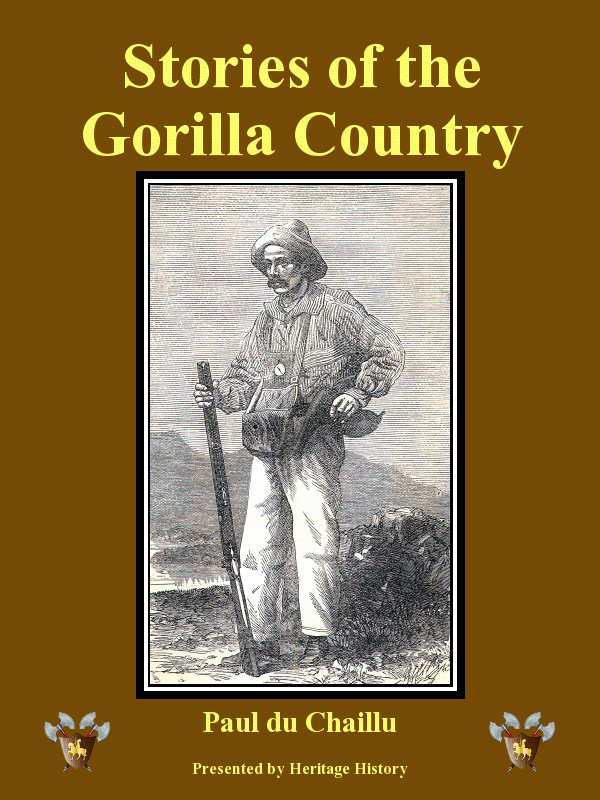
The reason this series of five books written for youngsters by one of the
earliest American explorers of equatorial Africa is near the top of our list of
favorite books has a great deal to do its utterly unique and inimitable
character. It has all of the attractions of a good Tarzan style adventure story,
combined with the reflective philosophy of Robinson Crusoe. It differs from both
of these however, in that it is the true account of the first American explorer
to live among the interior African tribes of Equatorial Africa for an extended
period of time. The author traveled by himself into the interior Africa, and
lived with the natives for many years, and in almost every situation, was the
first white person ever encountered by the interior tribes. He was not a
missionary. He was not affiliated with or sponsored by any government,
University, Church, or 'Royal Society'. He was not attempting to 'develop' the
country for trade. He was merely a curious adventurer, who was willing to risk
his life many times over, for the opportunity to see things no white man had
seen before.
Paul du Chaillu was the son of a French-American trader who owned a trading
station on the coast of Gabon in central Africa, and he accompanied his father
on several long-term trips to Africa. He had much of his education at the Jesuit
missions in the region where he met and befriended dozens of natives, and
learned several native languages. When du Chaillu was still a very young man,
his father died. Instead of inheriting his successful trading business however,
du Chaillu decided to become an explorer, and embarked on a three year journey
into the interior jungles of central Africa. In his travels he lived with,
hunted with, and befriended dozens of native Africans, learned several more
languages, collected hundreds of wild-life specimens, and had innumerable
adventures of such fantastic drama that many who heard his tales on his return
to civilization believed that they were utterly fanciful.
After returning to America for several years, during which time he wrote an
account of his adventures thus far, he prepared for an expedition across Africa
starting near the Congo Basin with the intention of exploring all of central
Africa by foot. (This was over fifteen years before Stanley navigated the Congo
River). The trials and tribulations of his unsuccessful expedition make the
fifth and final book in the series somewhat darker in character than the earlier
four, but all five, taken together are delightfully riveting. Du Chaillu comes
across as a sincere and curious fellow, greatly delighted by many of the sights
and characters that he encounters. His approach, when writing for young people,
is to explain his own reactions to difficult situations rather than to
criticize other's actions, and a great many of his escapades have very humorous
or ironic conclusions. One could not possibly invent a more interesting
fictional hero.
Stories of the Gorilla Country by Paul du Chaillu
| Title | Compact Library | size |
|---|
| Stories of the Gorilla Country | British Empire, Intermediate Readers | 120 |
| Lost in the Jungle | Intermediate Readers | 111 |
| Wild Life Under the Equator | Intermediate Readers | 90 |
| My Apingi Kingdom | Intermediate Readers | 101 |
| The Country of the Dwarfs | Intermediate Readers | 116 |
Van Bergen Asian Histories
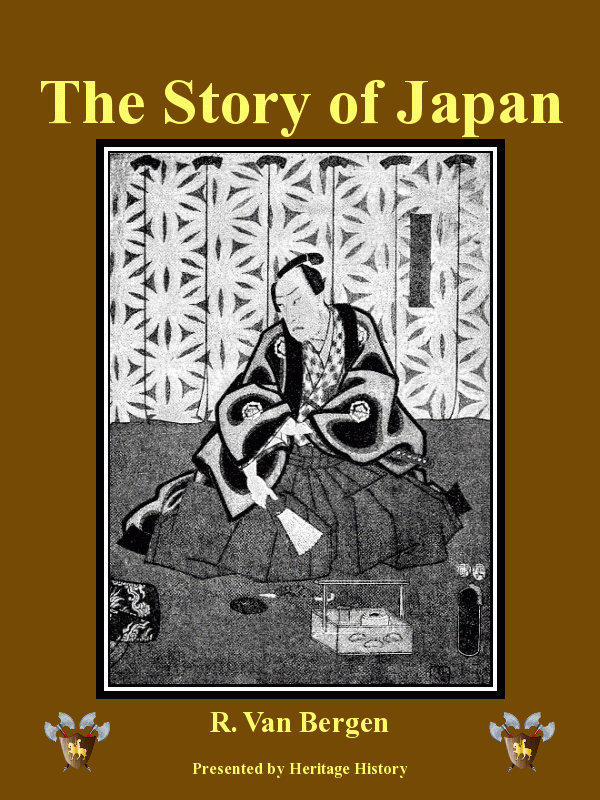
Robert Van Bergen was one of the first American scholars to study in Japan after
its opening to foreigners in the 1860ís. In addition to mastering Japanese and
other oriental languages, he taught English to the Japanese and was personally
known to many of the revolutionary statesmen of Japan who transformed the
country from a feudal empire, with mediaeval customs to one of the most advanced
technological countries in the world in only a single generation. A Boy of Old
Japan is actually the life story of one of the Choshiu samurai who led the
rebellion against the Tokugawa government in 1868. Although the subject himself
was not personally acquainted with Van Bergen, (he died during the revolution),
many of the other characters in the book were well known to the author. It is an
insightful account of one of the most important periods of Japanese history.
All of Van Bergenís other books, which include comprehensive histories of China,
Japan, and Russia are excellent introductions to the study of the Asian empires.
They were written at the turn of the century, so they do not consider the
dramatic dislocations in Russian and Asia during the 20th century, but instead
provide excellent insights into indigenous eastern cultures, and the manner in
which they first confronted the irrepressible forces of modernism.
Asian Histories by Robert Van Bergen
Sweetser Historical Sketeches
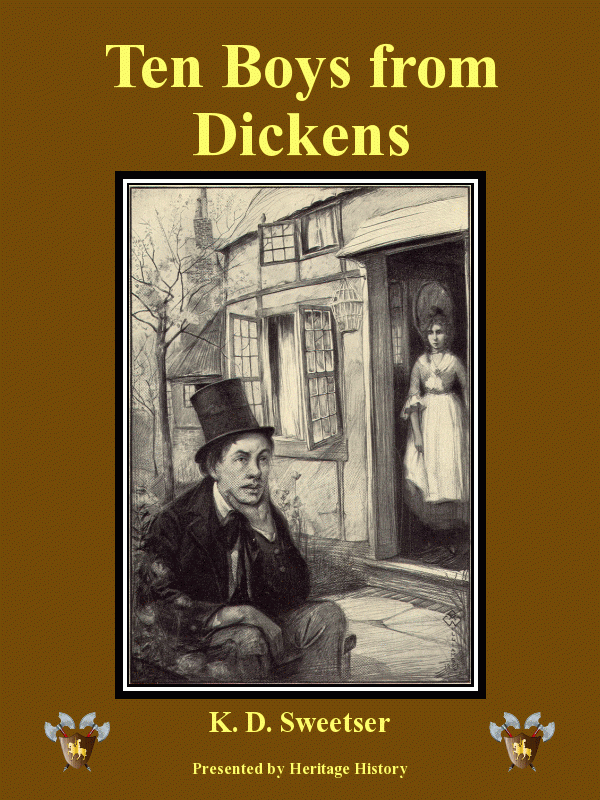
Each books is this series, written for middle school aged students, is composed
of about ten portraits of characters from history or literature. Most of the
subjects are children. Sketches of the youth and early achievements of each
character is emphasized over their accomplishments later in life, in order
to appeal to young readers.
The series includes sketches from classical literature as well as history.
The sketches taken from literature, including Dickens, Eliot, and Thackeray,
are based on excerpts from original works, edited for young readers.
Sketches taken from history also rely on original sources, modified for
young readers.
Sweetser Historical Sketches by Kate Dickenson Sweetser
| Title | Compact Library | size |
|---|
| Ten Boys from History | Intermediate Readers | |
| Ten Girls from History | Intermediate Readers | |
| Ten Boys from Dickens | British Empire | |
| Ten Girls from Dickens | unavailable | |
| Boys and Girls from Thackeray | British Empire | |
| Book of Indian Braves | unavailable | |
Nisbet Self-Help Histories
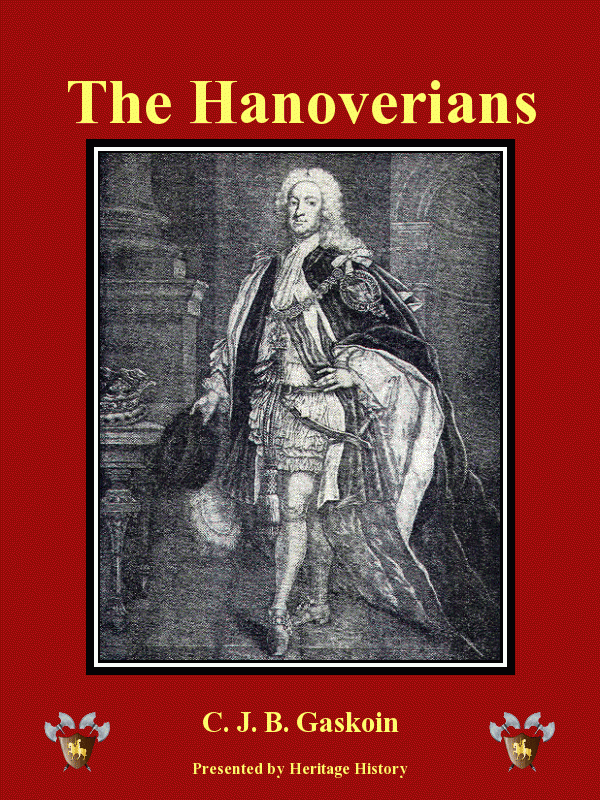
This three part series was written by a group of scholars from Oxford University and
provides a survey of English history from the time of the Norman conquest to the Victorian
era. These books are intended for intermediate students who already have some knowledge of
the course of English history and are interested in gaining more depth. It is an excellent
transition series for serious students. The political and religious issues of the day are
touched upon in only enough detail to give a clear idea of the realities of the situation
without getting bogged down in political theories. In addition to covering the most
important stories from history, this series introduces the student to social history, that
is: the living conditions, customs, education, and beliefs of both the aristocracy and the
peasantry.
The first book of the three, Normans and Plantagenets, introduces the reign of William the
Conqueror, and touches upon such important subjects as the Magna Carta, the conflict
between Henry II and Thomas a Becket, and the foundation of Parliament under Montfort. It
also provides background to the Hundred Years War, and the War of the Roses.
The second of the books covers both the Tudor and Stuart reigns, and does a good job of
introducing the intermediate student to some of the complexities of the eras, including
the Reformation, the English Civil War, and the "Glorious Revolution" during which
parliament deposed the Catholic King James II, and placed William III and Mary on the
throne, with relatively little bloodshed.
The final book in the series, The Hanoverians, covers the eighteenth and nineteenth centuries,
including the rise of the British empire in America and India, and the Napoleonic War. It
also provides an outline of the functions of British government as it existed at the turn
of the 20th century, including the roles of the monarchy, parliament, judicial system and
municipal governments.
Nisbet Self-Help Histories by various authors
| Title | Compact Library | size |
|---|
| Normans and Plantagenets by Ewing, Synge | unavailable | |
| Tudors and Stuarts by Synge, Hist S. | British Middle Ages | 120 |
| The Hanoverians by Gaskoin | British Empire | 126 |
Romance of Empire
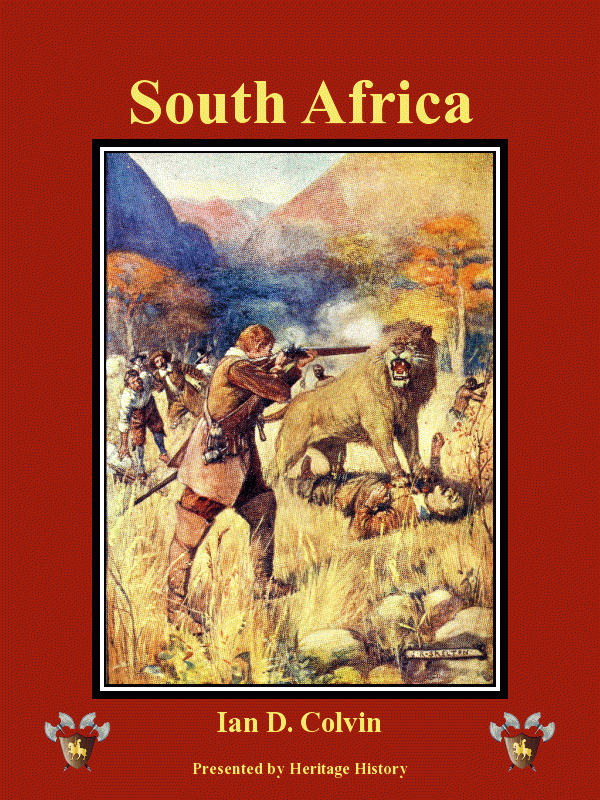
By the 19th century, the British Empire controlled a large percentage of the world,
and had territories on every continent. The Romance of Empire Series was conceived in
order to provide detailed histories of each of the major provinces of the British Empire.
These histories of the British colonies are lavishly
illustrated, and very well
written. This series was published by T. C. and E. C. Jack, the same outfit that produced the
well know Marshall series of British Histories. In contrast to Marshall series, however,
the Romance of Empire series is
told in greater detail and is directed at an older audience.
While Marshall covers the major history stories of the British Empire in a single volume,
the Romance of dedicates an entire book to each of the five major British provinces,
including India, Canada, New Zealand, Australia, and South Africa. Each history begins long
before the arrival of the British, and covers the earliest dealings of westerners with the
indigenous people. In addition to the six books about the major colonies, the series
includes two additional books. Land of the Golden Trade gives a history of colonial
dealings on the West Coast of Africa, including several chapters on the slave trade.
Episodes from the history of many of Britain's lesser colonies, including Gibraltar,
Malta, and the West Indies are given in Outposts of Empire.
Romance of Empire by various authors
| Title | Compact Library | size |
|---|
| India by Surridge | British Empire | 120 |
| South Africa by Colvin | British Empire | 147 |
| New Zealand by Horseley | unavailable | |
| Australia by Lang | unavailable | |
| Canada by Willson | unavailable | |
| Outposts of Empire by Lang | unavailable | |
| Land of the Golden Trade by John Lang | British Empire | 122 |
The size listed indicates the number of 8Ĺ by 11 sheets of paper required to print the entire book,
single-sided. This number is about half the number of pages in the original book, since approximately
two "pages" of text are reproduced on every sheet.
Copyright © Heritage History 2012
All rights reserved





